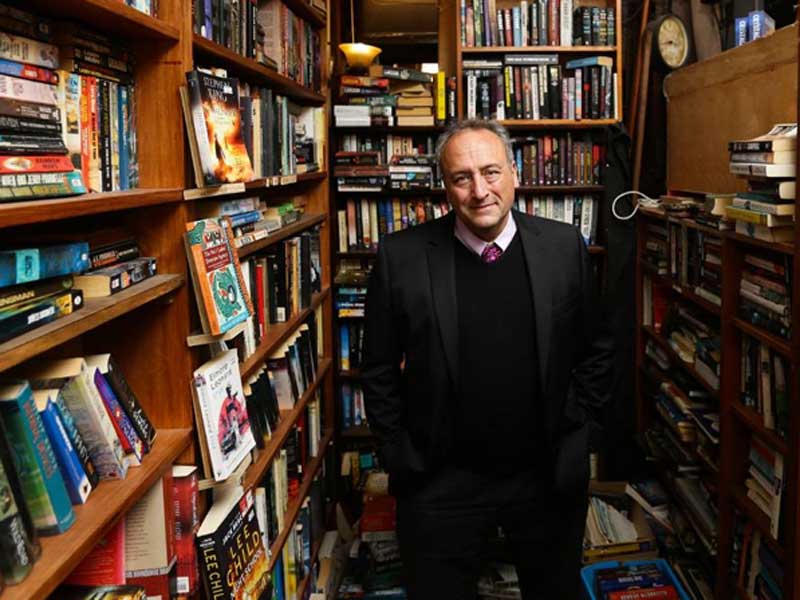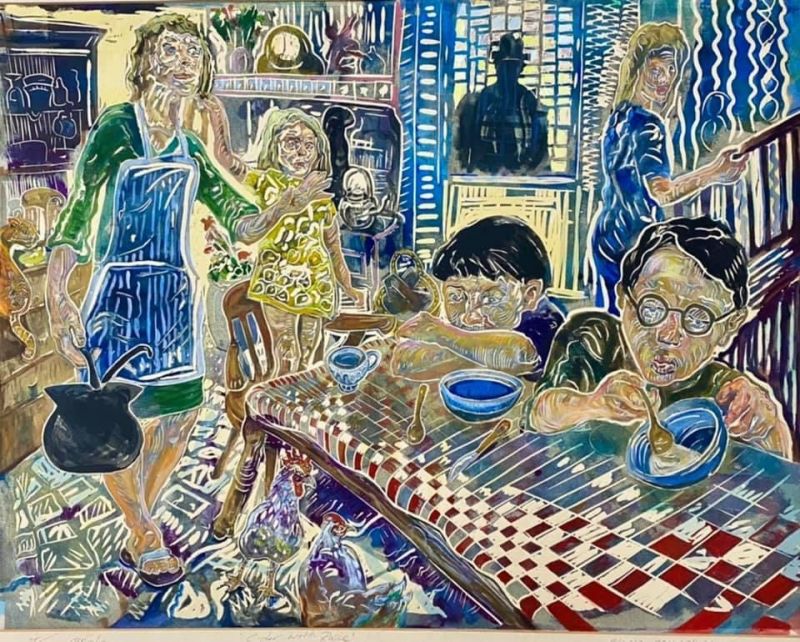Researcher Highlights
The creative link between research and impact
Professor Mario Minichiello
Professor Mario Minichiello is a world-renowned designer, illustrator, artist and academic. With a focus on cross-industry collaboration, his work is helping to find creative solutions to real-world problems.

Research is critical in developing solving the world’s biggest problems—from helping us deliver better patient care, to informing new environmental and societal interventions.
But uncovering new research findings is just one step in a much larger process. Once we have the research, how can we communicate it to the community? How can we develop the human interface to be able to use the technologies? And how can we use the research to change people’s behaviour?
As co-leader of research at SOCI FASTLAB, Professor Mario Minichiello is working to ensure new research discoveries become part of peoples everyday lives, their personal stories, implemented creatively and have real impact within society.
Mario and his team use visual communication tools and processes such as visualisation, design, animation, film, VX, UI gamification to develop a range of interventions such as children’s books, animations, user interface designs apps and more—to gather research data and deliver evidence-based solutions in a way that helps people engage, understand and respond.
This might include using clever infographics to share notable research data with the community. Or creating short films to support teenagers’ positive mental health.
By thinking outside the box, Mario is helping new research drive real change.
“While STEM (science, technology, engineering and medicine) makes the discoveries, the creative industries enculturates these discoveries into everyday human behaviour. We socialise new ideas through creative acts to ensure maximum impact.” (Minichiello:2011)
In the media
Mario has a strong international profile in the creative industries.
Over the years, he’s worked as a reportage illustrator for the BBC’s Newsnight and as an artist during the many conflicts around the world. He has created work for the Guardian, The FT, Amnesty International, the Terence Higgins Trust, Longmans, The Times and ITN News.
“The chance to influence how people in any society think and behave, even for a brief moment, is a positive intervention in a world that is increasingly concerned with mindless celebrity, consumerism and self-interest."
With a global following, Mario has received acclaim from many in the creative industry and beyond.
"Mario Minichiello's work grabs your eyes, your brain, your whole self," said BBC Worldwide Publishing Director Martin Mulloy.
"Some drawings impress with their emotion and humanity, others impress with their technique; Mario's do both and, what is even better, because of the nature of their questioning, they make even this most cynical old hack want to go out and draw the world afresh," said cartoonist Steve Bell.
Mario’s work is widely recognised for its influence in the cultural, political and academic domains. Using the power of creativity, Mario is also helping to take new research and ideas to the world.
“Due to its visual nature, my work can be disseminated much wider and further than most journal articles.
“One highly researched series of illustrations in the Guardian Newspaper could be seen worldwide by over 9 million readers—more than double the impact of many academic papers.”
Interdisciplinary partnerships
Mario’s interdisciplinary research often acts as a linchpin between industry, community and researchers. His work encourages collaboration, bringing the best minds together to tackle community and global challenges.
“We need genuine interdisciplinary research that uses the dynamic and impactful nature of the creative industries. All disciplines must work as equal partners to enhance Australian research and its global impact.”
This includes a real shift in the mindset of how we deeply think about our social services, moving from clinical thinking to empathic design thinking and co-design, a collaboration between the health services and those they serve. Teaming up with clinical teams from Birmingham children’s hospitals, Mario worked with children’s book illustrator Liz Anelli to help hospital staff gain children’s consent for liver transplant operations using visual design.
“Using illustrations, our research and development project helped the hospital discuss an important issue with children in a non-threatening way, bringing about higher rates of recovery and survival.”
Among other achievements, Mario’s work is also helping to develop the first interdisciplinary researched and developed stroke app, which has been clinically tested and revised.
“The app has the potential to improve both the survival and quality of life for people suffering from one of the most debilitating diseases in Australia.”
From ‘me to we’
There’s no doubt that Mario’s work is contributing to the promotion and dissemination of learning in Australia and worldwide.
Whether in research or education, Mario’s creativity and communications expertise are creating innovative and collaborative solutions for society. The changes he has made with his team in the content delivery of programs is helping to define the creative industries work future workforce.
“As a professor in the creative industries, I am committed to moving society from ‘an existing situation to a preferred one’ (Simon H, 1959).
“My role as a leader is to bring positive change and help us move our thinking from ‘me to we’.”

Art by Mario Minichiello

Art by Mario Minichiello

Art by Mario Minichiello

Art by Mario Minichiello

Art by Mario Minichiello

Art by Mario Minichiello

Art by Mario Minichiello

Art by Mario Minichiello

Art by Mario Minichiello
The University of Newcastle acknowledges the traditional custodians of the lands within our footprint areas: Awabakal, Darkinjung, Biripai, Worimi, Wonnarua, and Eora Nations. We also pay respect to the wisdom of our Elders past and present.
